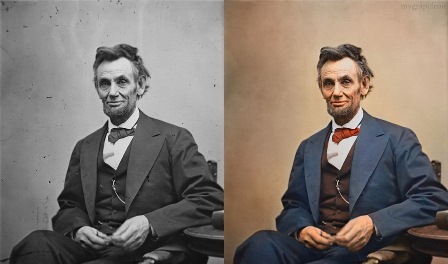
Image Credit: Sanna Dullaway
Abraham Lincoln has been colored in by means of computer software. There are more color photographs of the past today than there have ever been before: and that is because people, like artist Sanna Dullaway, are using Photoshop to colorize black and white ones. In this post, I wonder why.
To approach an understanding, it will be helpful to consider a few examples of real color photographs taken in the later Nineteenth or early Twentieth Century. Color photography got its start with famed Scottish physicist James Clerk Maxwell’swork on the perception of color in the 1850s, although it wasn't until 1907 that the Lumière brothers introduced the first commercially viable technology for color photography. In 1909, French banker and philanthropist Albert Kahn (not to be confused with the architect by that name) hired professional photographers to go out and capture the world in true color. Here's a French scene from that groundbreaking series:
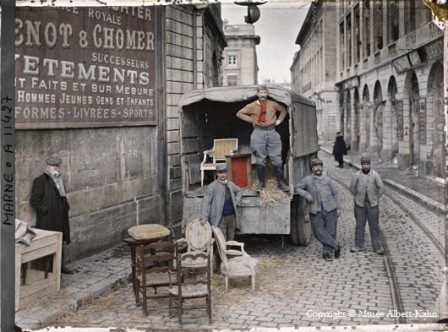
Image Credit: Musée Albert Kahn
With Lumière brothers' “Autochrome” technology, photographs from the early Twentieth Century started to flow. In the one below, a French soldier looks out from his post in Eglingen, Haut-Rhin: 1917.
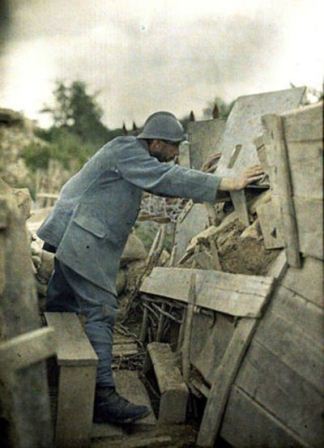
Image Credit: Paul Castelnau
And below is a photograph of Sergei Mikhailovich Prokudin-Gorskii, who travelled the Russian Empire from 1909 to 1915, capturing its peoples and places in color.
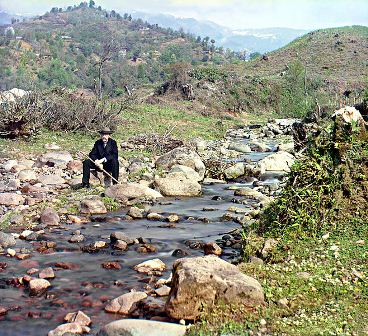
Image Credit: Sergei Mikhailovich Prokudin-Gorskii Collection (Library of Congress)
These photographs shock me into a realization so basic it is hard to put into words. History is really real. The old cities were really there, in full color. Men and women looked then like they do today; streams were blue then, hair was red, clouds were white, clothes were blue. The world was just as bright in the past as it is today. Hundreds, thousands, of years ago was fully as present to those living then as today is present to us. All the black and white photos and books through which I have learned about history had allowed a creeping sort of disbelief into my attitude towards the past. I realize I have sometimes equated the past with the media through which it has been made present to me. These color photographs inspire me to imagine the past anew as pulsing, felt, immediate.
Of course, color photography is a medium; it is still a technology for capturing a visual effect and reproducing it to a now distant viewer. The immediacy I am feeling is in my imagination. I think it is this feeling of immediacy which people who are colorizing black and white photos are trying to produce.
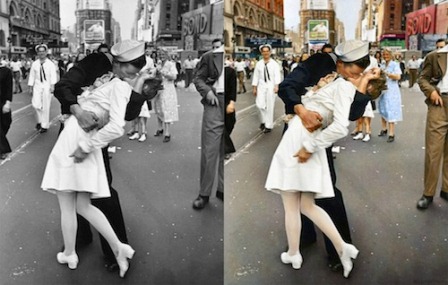
Image Credit: Sanna Dullaway
In this image, artist Sanna Dullaway has colorized Alfred Eisenstaedt’s iconic “V-J Day in Times Square,” originally published with the caption: In New York's Times Square a white-clad girl clutches her purse and skirt as an uninhibited sailor plants his lips squarely on hers.
It's like it happened yesterday.
Recent comments
2 years 29 weeks ago
2 years 44 weeks ago
2 years 44 weeks ago
2 years 50 weeks ago
3 years 4 weeks ago
3 years 4 weeks ago
3 years 4 weeks ago
3 years 6 weeks ago
3 years 6 weeks ago
3 years 6 weeks ago